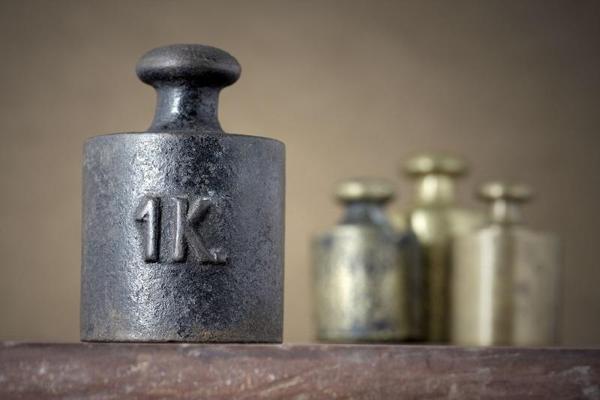Definition of kilogram, ampere, kelvin and mole change
VERSAILLES


The world's standard definition of the kilogram, the ampere, the kelvin and the mole has been changed, after representatives from 60 countries voted on Nov. 16 in Versailles to redefine the International System of Units (SI) for weight, current, temperature and amount of chemical substance.
The definition of the kilogram for more than 130 years, the International Prototype of the Kilogram (IPK), a cylinder of a platinum alloy stored at the International Bureau of Weights and Measures (BIPM) in France, will now be retired.
The cylinder, known as Le Grand K, will be replaced by the Planck constant -- the fundamental constant of quantum physics. While the stability of the IPK could only be confirmed by comparisons with identical copies, a difficult and potentially inaccurate process, the Planck constant is ready for use everywhere and always.
Le Grand K has been at the forefront of the international system of measuring weights since 1889. Several close replicas were made and distributed around the globe, according to BBC.
But the master kilogram and its copies were seen to change - ever so slightly - as they deteriorated.
In a world where accurate measurement is now critical in many areas, such as in drug development, nanotechnology and precision engineering - those responsible for maintaining the international system had no option but to move beyond Le Grand K to a more robust definition.
The fluctuation is about 50 parts in a billion, less than the weight of a single eyelash. But although it is tiny, the change can have important consequences. Coming in is an electrical measurement which Dr Stuart Davidson, head of mass metrology at NPL, says is more stable, more accurate and more egalitarian.
"We know from comparing the kilogram in Paris with all the copies of the kilogram that are all around the world that there are discrepancies between them and Le Grand K itself," he said.
"This is not acceptable from a scientific point of view. So even though Le Grand K is fit for purpose at the moment, it won't be in 100 years' time."
Electromagnets generate a force. Scrap-yards use them on cranes to lift and move large metal objects, such as old cars. The pull of the electromagnet, the force it exerts, is directly related to the amount of electrical current going through its coils. There is, therefore, a direct relationship between electricity and weight.
So, in principle, scientists can define a kilogram, or any other weight, in terms of the amount of electricity needed to counteract the weight (gravitational force acting on a mass).
There is a quantity that relates weight to electrical current, called Planck's constant - named after the German physicist Max Planck and denoted by the symbol h.
But h is an incredibly small number and to measure it, the research scientist Dr Bryan Kibble built a super-accurate set of scales. The Kibble balance, as it has become known, has an electromagnet that pulls down on one side of the scales and a weight - say, a kilogram - on the other.
The electrical current going through the electromagnet is increased until the two sides are perfectly balanced.
By measuring the current running through the electromagnet to incredible precision, the researchers are able to calculate h to an accuracy of 0.000001%.
This breakthrough has paved the way for Le Grand K to be deposed by "die kleine h".
Every few decades, all the replica kilograms in the world had to be checked against Le Grand K. The new system, now that it's been adopted, will allow anyone with a Kibble balance to check their weights anytime and anywhere, according to NPL's Dr Ian Robinson.
"It feels really good to be at this point. I feel it is the right decision. Once we've done this it will be stable for the foreseeable future," he said.
